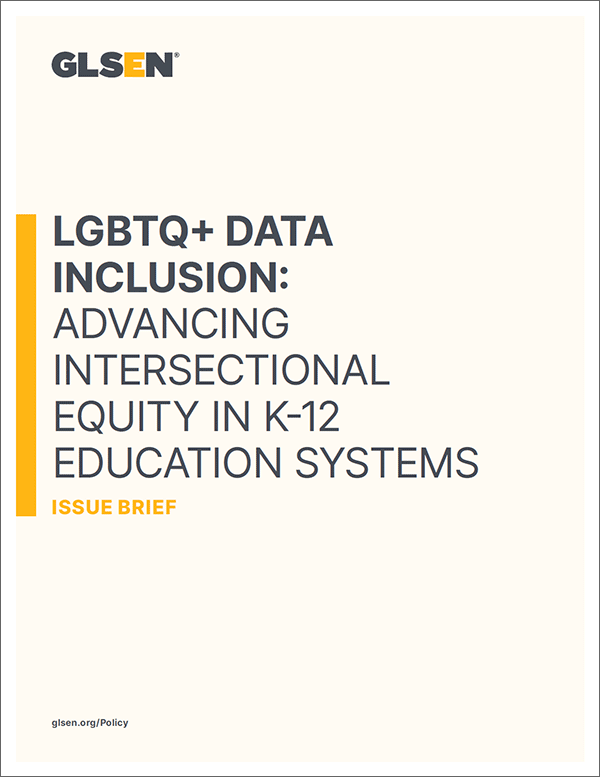
LGBTQ+ Data Inclusion in K-12 Education Systems

Collecting data on LGBTQ+ issues and the experiences of LGBTQ+ young people is essential both for enforcing civil rights protections and advancing racial, gender, and disability justice outcomes in K-12 education systems across the country. The absence of this data:
- Is a barrier to full implementation of nondiscrimination protections;
- Obscures disparities impacting LGBTQ+ young people in K-12 schools; Prevents educators from accessing the information they need to develop and evaluate the impact of programming on LGBTQ+ students and their non-LGBTQ+ peers; and
- Limits the ability to assess the impact of laws, policies, and initiatives on the health and wellbeing of LGBTQ+ young people and young people with an LGBTQ+ parent, guardian, or family member.
Leading scientists, researchers, and educators agree on the need for LGBTQ+ data inclusion. In 2022, the National Academies of Sciences, Engineering, and Medicine (NASEM) published a consensus study with guiding principles for the collection of LGBTQ+ demographic data and recommended measures for collecting such data, primarily with adults.
Building on over twenty years of GLSEN's national survey research, this brief explains why LGBTQ+ data inclusion is necessary to ensure all students have access to safe and inclusive schools and details policy recommendations for LGBTQ+ data inclusion in different contexts, such as:
- School climate surveys administered by schools or local education agencies, including as part of statewide accountability system;
- Surveys of teachers, administrators, and other staff;
- Surveys of parents and families;
- Federal surveys of young people in K-12 schools, including the Youth Risk Behavior Survey and the High School and Beyond longitudinal study;
- Administrative data collection, including the U.S. Department of Education’s Civil Rights Data Collection.
DOWNLOAD THE BRIEF >
Read our related research brief, Considerations for Measuring Sexual Orientation and Gender Identity in Surveys of Secondary School Students.
